Style Installation art Name Judy Pfaff | Role Artist Books all of the Above | |
 | ||
Education Yale University (1971–1973) Awards MacArthur Fellowship, Guggenheim Fellowship for Creative Arts, US & Canada | ||
Judy pfaff making feeling art21 exclusive
Judy Pfaff (born 1946 in London, England), is an American artist, known mainly for Installation art. Pfaff has received numerous awards for her work, including a John D. and Catherine T. MacArthur Foundation Award (2004) and fellowships from the John Simon Guggenheim Memorial Foundation (1983) and the National Endowment for the Arts (1986). Major exhibitions have been held of her work at the University of Wisconsin–Madison (2002), Denver Art Museum (1994) and Saint Louis Art Museum (1989). In 2013 she was elected to the American Academy of Arts and Sciences.
Contents
- Judy pfaff making feeling art21 exclusive
- Judy pfaff buckets of rain time lapse art21 exclusive
- Early life and education
- Exhibitions
- References
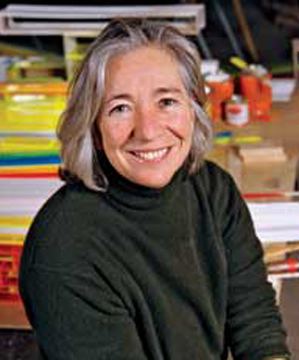
Judy pfaff buckets of rain time lapse art21 exclusive
Early life and education
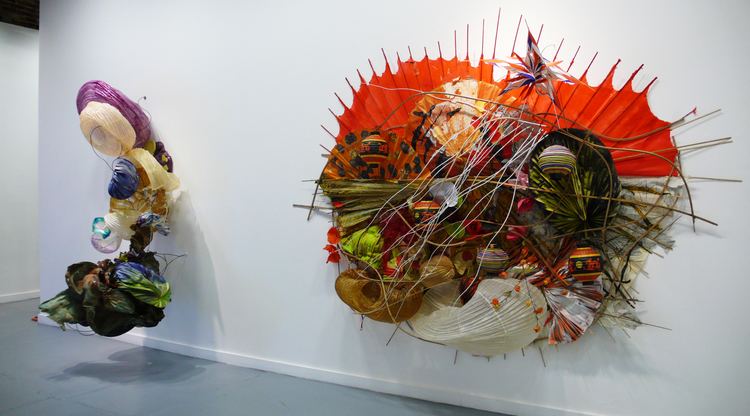
Pfaff comes from a working-class background. Her father, a Royal Air Force pilot, was absent from her life. Pfaff's mother moved to Detroit soon after Pfaff's birth, leaving Pfaff and brother to be raised by their grandparents. Post-war London was bleak; Pfaff has described playing in bombed out and abandoned buildings, gathering "raw materials for fantasy buildings." A reunion in 1956 with her mother in Detroit, where she attended Cass Technical High School, did not end well. At age 15, Pfaff left home and eventually married a U.S. Air Force officer. She attended Wayne State University and Southern Illinois University, completing a BFA at Washington University in 1971.
When Pfaff enrolled in the MFA program at Yale University School of Art, she was significantly more mature in age and experience than many of her classmates. She embraced the use of heavy equipment and outsized materials and was influenced by other disciplines such as physics, medicine, zoology, and astronomy. She also participated in Process Art and the Pattern and Decoration movement which continued on in the future of her artwork. After completing her MFA at Yale in 1973, Pfaff created her first large-scale installation piece, titled "J.A.S.O.N--J.A.S.O.N.," which showed at the nonprofit Artists Space in New York in 1975. A significant influence on Pfaff's artistic style was Al Held the Expressionist painter, he taught at Yale while Pfaff was earning her MFA. Known for her on site installations. Judy Pfaff describes her site specific installations as abstract narratives based on personal experiences. In 2006, Pfaff's art piece, Buckets of Rain, that captured the essence of dicatomus relationship, was exhibited at the Ameringer & Yohe Fine Art, in New York. The piece was critically discussed by Jim Yohe, the gallery director, who was quoted describing the piece as '"four players in a quartet," conjoined by the "wrap-around [vertically]".'
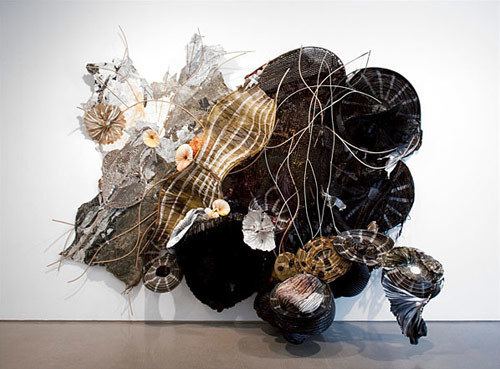
Pfaff’s wild, prodigious creativity has never been cowed by refined minimalist sensibilities, and she has always rejected preconceived form in art making. Pfaff has influenced at least two generations o f artists, from Jessica Stockholder to Sarah Sze, arguably inspired Frank Stella’s three dimensional “Exotic Bird” paintings in the late ’70s, and encouraged Al Held, mentor and lifelong friend, to become even more complex in his work. In both shows, new ideas about the inevitability of decay and uncontrollable mutation have tempered her irrepressible exuberance with a spirit of mortality, both the earth’s and her own.
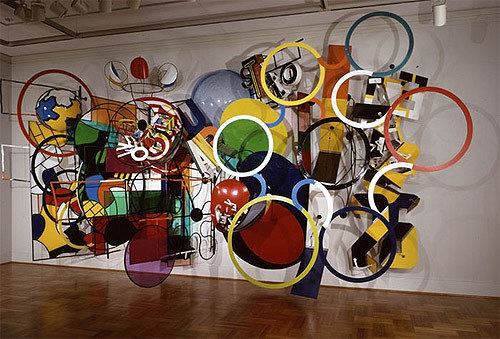
Pfaff creates paintings, sculpture, prints and installation art. Of the creation of her work, she says "I’ve always done prints and drawings, always. No one buys those installations, so when you see things that are portable that I’m not attached to, they’re probably two-dimensional. If you get an installation of mine, you inherit [my assistant] Ryan, myself, a crew, the dog, the noise, the dirt. We wreck the house. So if you don’t want that, then you get prints and drawings." Pfaff's work has been describes as "a disaster area almost to the opening day," detailing the lack of coherence between the elements of her work, verging on the edge of chaos.
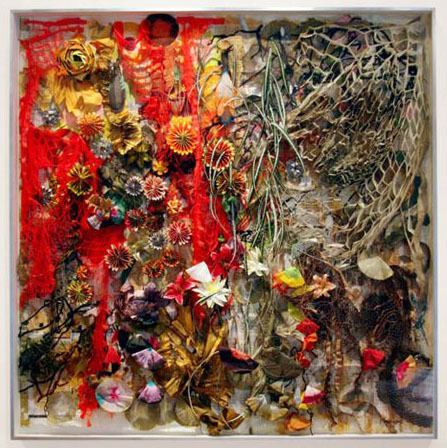
Her installation art has been compared to that of "a collage in space.". New York Times art critic, Roberta Smith, wrote of Pfaff's work "she has been creating elaborately impure, implicitly narrative environments for more than 25 years. She is at the top of her form in the airy, exhilarating Neither Here Nor There." Benjamin Genocchio, also with the New York Times, described several of Pfaff's works undergoing renovation:
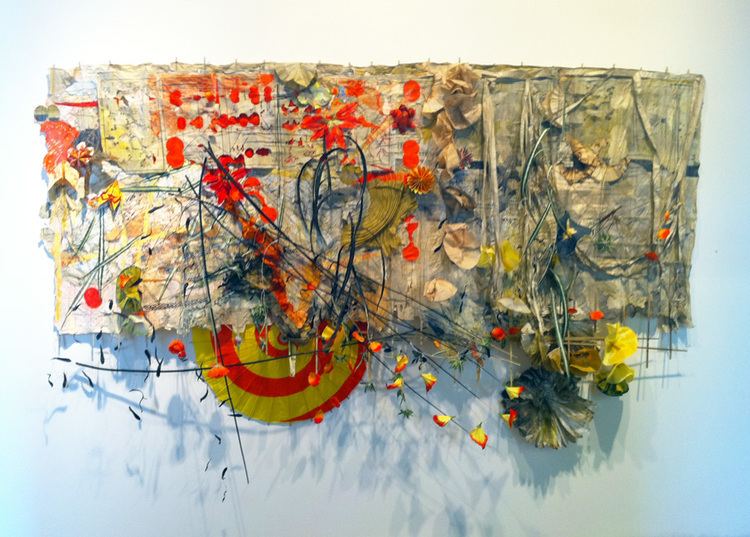
Although these works look random, when you begin to get into them it is remarkable how all the elements seem to hang together and develop on one another. She seems somehow to get order and disorder working for her at the same time. It is a very contemporary quality, given our lives today.
Pfaff has also done scenic design. In 2010 Ameringer/McEnery/Yoke showed a retrospective from her oeuvre ranging from the late 1970s to recent work. In a review in The Brooklyn Rail, Kara L. Rooney wrote of the survey's cohesion, "somehow, Pfaff’s eclectic interpretation of ’80s flamboyance, ’90s insecurity, and the aughts’ incessant optimism succeeds."
Pfaff taught at the California Institute of the Arts from 1976 to 1979. She joined the faculty at Bard College in New York in 1994, where she is currently the codirector of the Studio Arts program.
